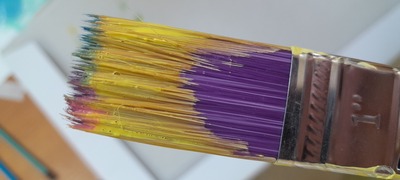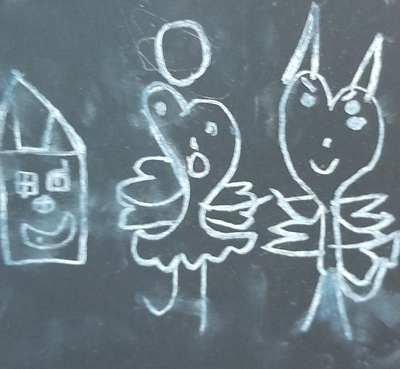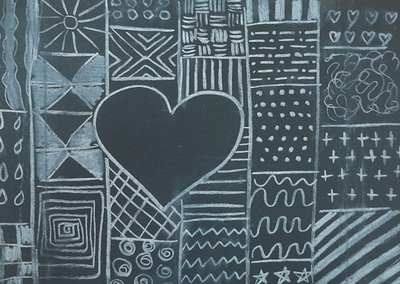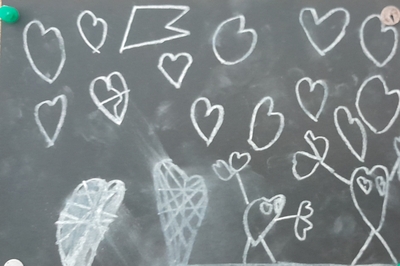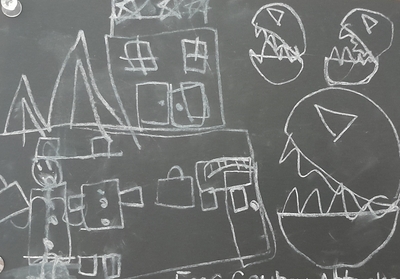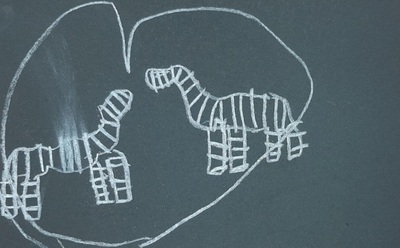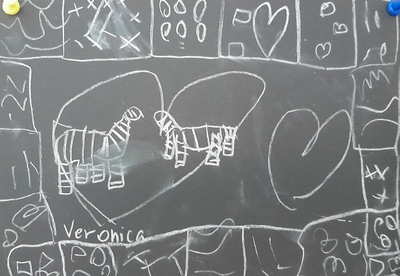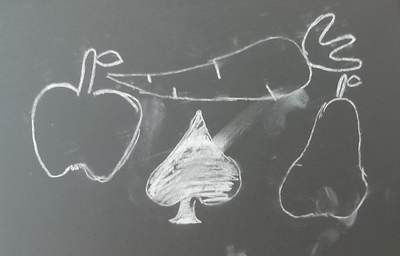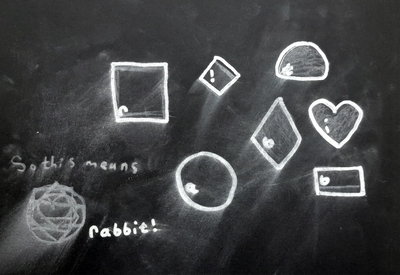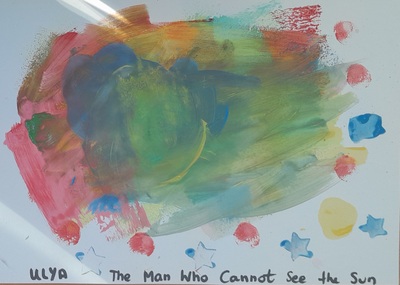
Somehow, in this academic year, in our Art Explorers adventure, the days are filled with some ‘firsts’. Now and then, and more frequently that I would expect it to happen, we bump into something that we have never done before and something that we are trying for the first time and that we are experimenting with. I love it!
This time round, we experienced a mini-series of the same artist over two consecutive lessons. It is not that Monsieur Yves is such an inspiring artist that we simply had to give him a double Art slot. I mean, he is amazing and I am so happy that I have discovered him for myself and for my students but, surely, there have been many Great Artists that, theoretically, at least, should have been granted with that privilege, Malevich, Goncharova, Warhol or Picasso…A simple coincidence, that’s all it was. I got the amazing set of rollers and stamps but only in time for my older group, the younger kids on Mondays missed their chance. Since we had so much fun with the rollers, I simply decided to let everyone help! Then and only then, did it turn out later that Yves Klein himself loved using different tools…What a coincidence!
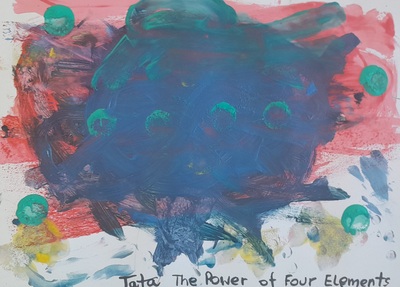
The language
The language stayed the same and we had a lot of time with the spinner and the verbs (you can read about them here) and, to be perfectly honest, the langauge input was kept short on purpose.
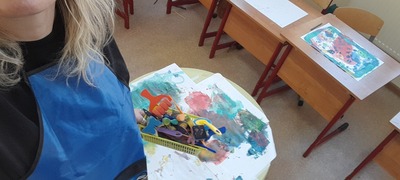
The artist
We just got back to the previous class and looked at some of his paintings again and I told the students that, apart from using the beautiful blue and painting with different body parts, Yves also used a variety of different rollers, stamps and other tools and that it is exactly what we would do.

The art
The room was set up exactly the way we did last week, with the round table in the centre of the U-set of desks and it was basically our palette (have been covered in paper and painter scotched over before). I showed the students all of the tools and how they can be used. Because it was the last lesson in the series, I was also able to look back at the works created before. My special focus was this one, created by one of my older students because it combines pencil drawing, a variety of prints and a great roller work.
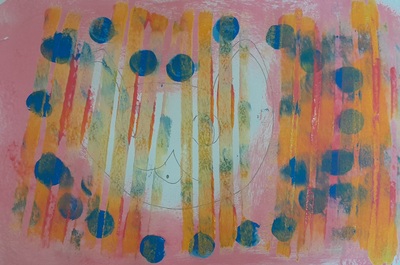
After that, we just got down to work and, in one line, it was just amazing.
Kids really enjoyed working with a new tool and experimenting with everything they had to offer. It was a good idea to cover the palette table with paper because it was the first place to try out rollers and stamps. This is also were they were mixing the colours to get new shades and colours. They were very careful and conscious while choosing the tools and combining them with the paints. We were talking about the process, a little bit in English and mostly in L1 and thanks to that I could see how their ideas were taking shape. That was precious. Or so I thought. Until the artists started to come up with the titles for their work. They did all of that in Russian and I helped them translate but hey, look at them, they are amazing…What is more, they were not created instantly. The kids really did put some work into creating them. Some students made a decision and then, upon more consideration, they changed their mind and came up with even a better, more suitable option. I was speechless and I continue to be. Why? Just look at the photos!
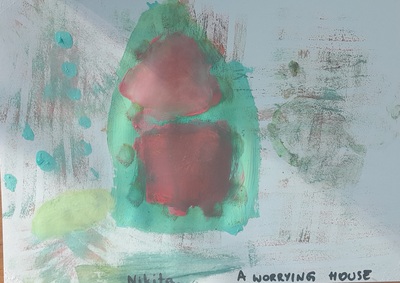
Happy teaching!
